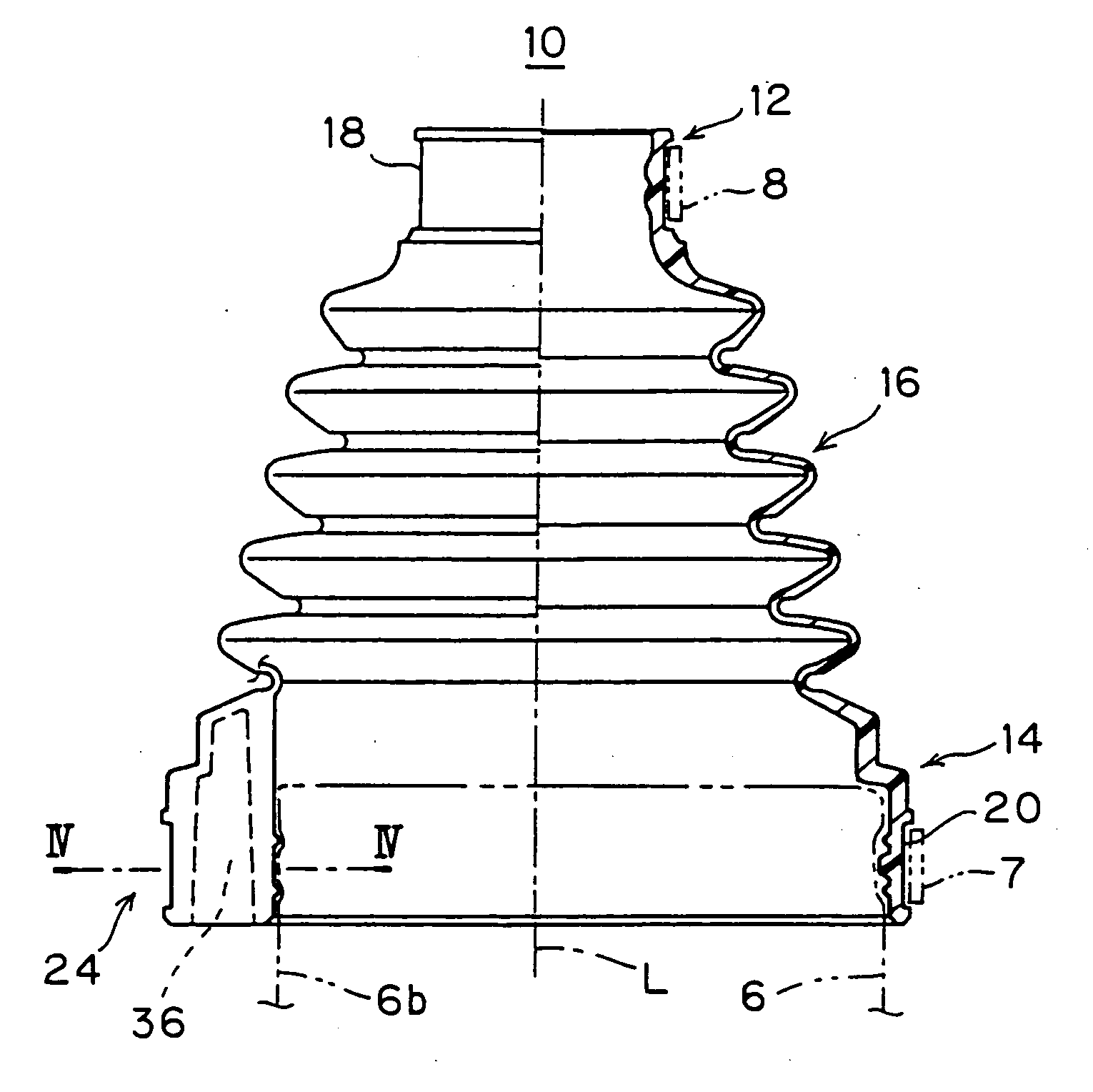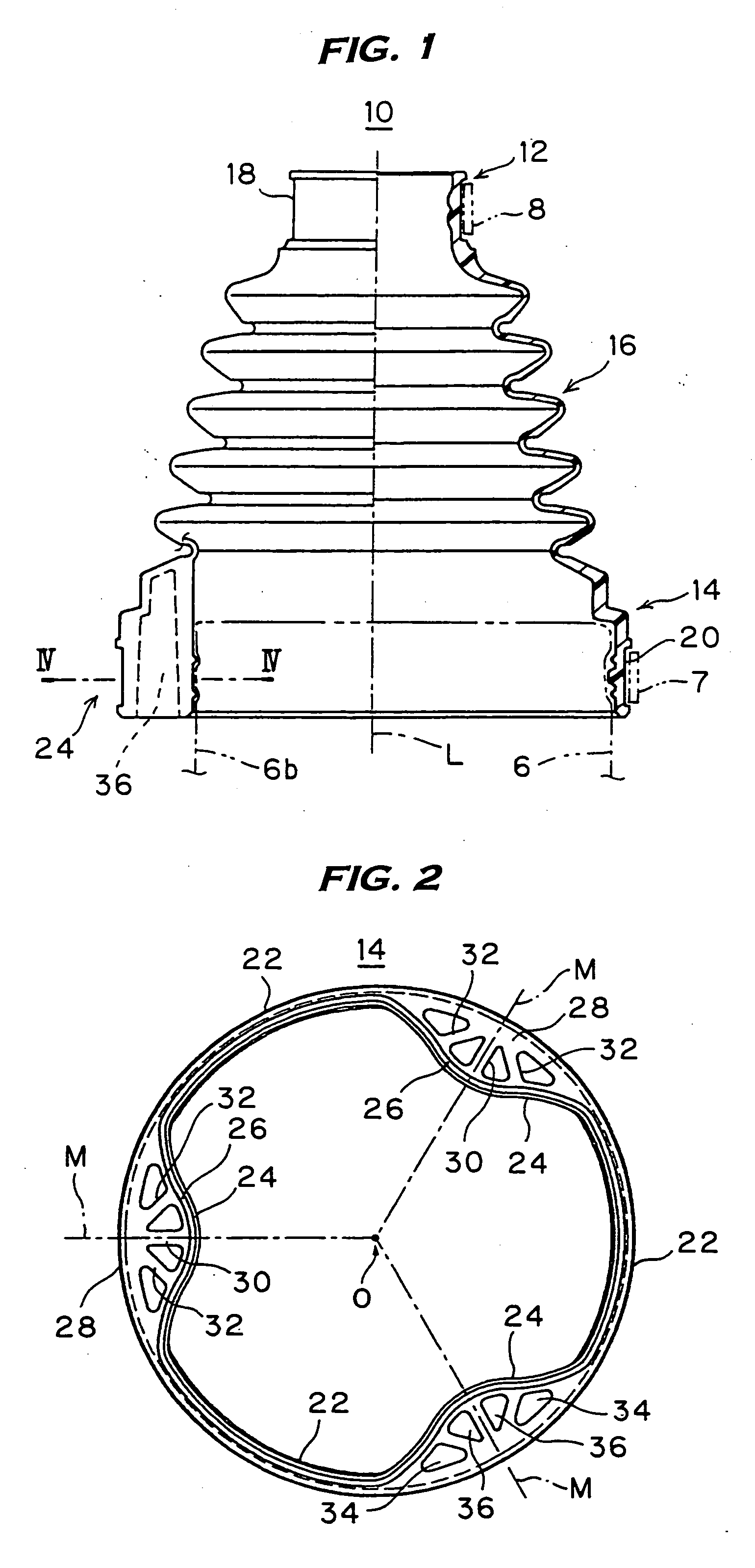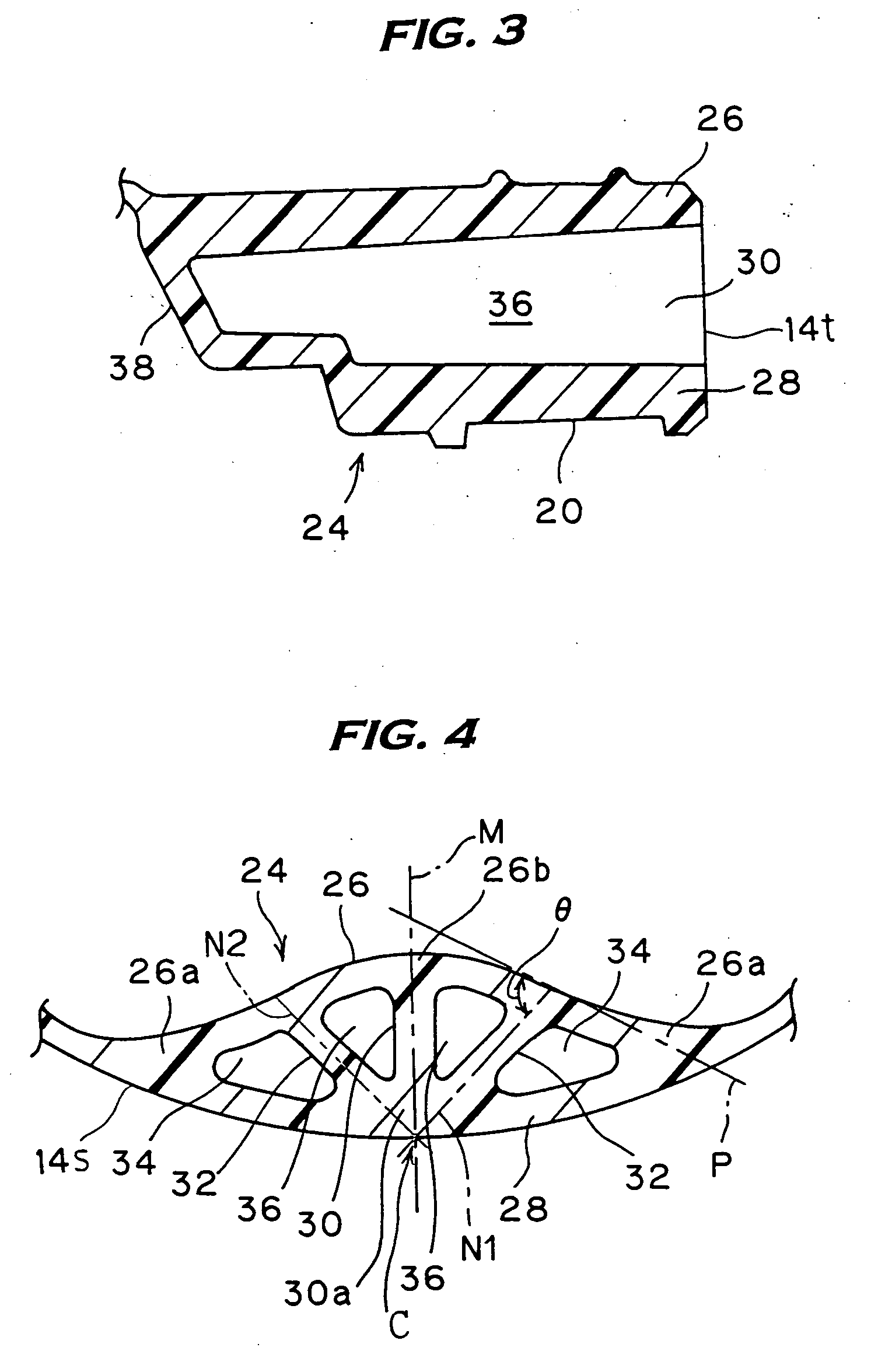Joint boot
a joint boot and boot body technology, applied in the field of belt-shaped joint boots, can solve the problems of difficult circumferential equalization of the contact pressure of the inner wall portion on the outer housing when tightening and fixing the large-diameter attachment part, and the insufficient sealing properties of the outer housing b>6/b>, so as to achieve superior moldability, reduce the effect of internal wall thickness and effectively prevent the production of sink marks
- Summary
- Abstract
- Description
- Claims
- Application Information
AI Technical Summary
Benefits of technology
Problems solved by technology
Method used
Image
Examples
Embodiment Construction
[0029] Embodiments for carrying the invention into effect will be described with reference to the accompanying drawings.
[0030]FIG. 1 is a half sectional, half side elevational view of a joint boot 10 relating to one embodiment of this invention, and FIG. 2 is a front elevation of its large-diameter side. The joint boot 10 is a boot made of thermoplastic elastomer resin destined to be mounted on a tripod type constant velocity joint for automobiles illustrated in FIGS. 7 and 8 as stated above. The joint boot 10 includes a small-diameter attachment part 12 at its one end, a large-diameter attachment part 14 at the other end disposed coaxially with the small-diameter attachment part 12 to be spaced apart from it, and a bellows part 16 of a hollow form integrally joining the small-diameter attachment part 12 and the large-diameter attachment part 14, and is fabricated integrally by a conventional molding method such as injection blow molding.
[0031] The small-diameter attachment part 1...
PUM
 Login to View More
Login to View More Abstract
Description
Claims
Application Information
 Login to View More
Login to View More - R&D
- Intellectual Property
- Life Sciences
- Materials
- Tech Scout
- Unparalleled Data Quality
- Higher Quality Content
- 60% Fewer Hallucinations
Browse by: Latest US Patents, China's latest patents, Technical Efficacy Thesaurus, Application Domain, Technology Topic, Popular Technical Reports.
© 2025 PatSnap. All rights reserved.Legal|Privacy policy|Modern Slavery Act Transparency Statement|Sitemap|About US| Contact US: help@patsnap.com



